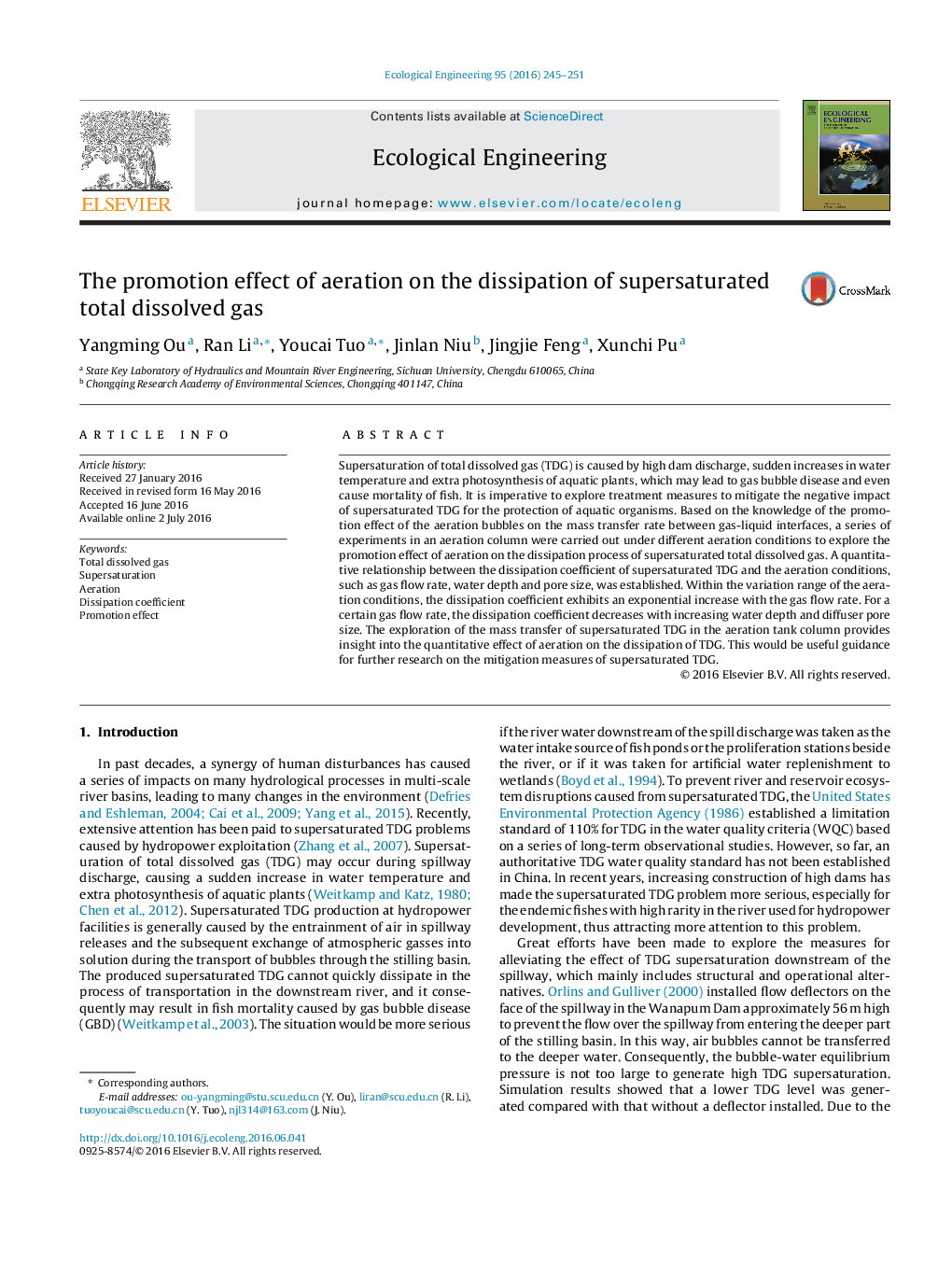| کد مقاله | کد نشریه | سال انتشار | مقاله انگلیسی | نسخه تمام متن |
|---|---|---|---|---|
| 4388449 | 1618004 | 2016 | 7 صفحه PDF | دانلود رایگان |
Supersaturation of total dissolved gas (TDG) is caused by high dam discharge, sudden increases in water temperature and extra photosynthesis of aquatic plants, which may lead to gas bubble disease and even cause mortality of fish. It is imperative to explore treatment measures to mitigate the negative impact of supersaturated TDG for the protection of aquatic organisms. Based on the knowledge of the promotion effect of the aeration bubbles on the mass transfer rate between gas-liquid interfaces, a series of experiments in an aeration column were carried out under different aeration conditions to explore the promotion effect of aeration on the dissipation process of supersaturated total dissolved gas. A quantitative relationship between the dissipation coefficient of supersaturated TDG and the aeration conditions, such as gas flow rate, water depth and pore size, was established. Within the variation range of the aeration conditions, the dissipation coefficient exhibits an exponential increase with the gas flow rate. For a certain gas flow rate, the dissipation coefficient decreases with increasing water depth and diffuser pore size. The exploration of the mass transfer of supersaturated TDG in the aeration tank column provides insight into the quantitative effect of aeration on the dissipation of TDG. This would be useful guidance for further research on the mitigation measures of supersaturated TDG.
Journal: Ecological Engineering - Volume 95, October 2016, Pages 245–251
